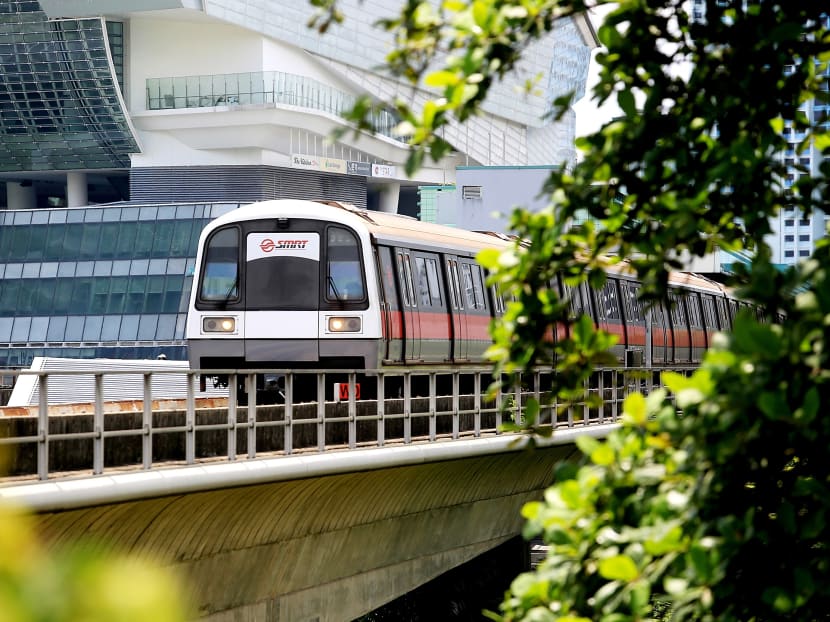A lesson from MRT incidents — communicate well to restore confidence
As I browsed through the news on Sunday, what caught my eye was Prime Minister Lee Hsien Loong’s comment that there are good lessons to be learnt from the tunnel flooding at Bishan MRT station and the collision at Joo Koon MRT station.

When transport operators resort to whitewashing information, commuter confidence is further undermined, says the author. TODAY file photo
As I browsed through the news on Sunday, what caught my eye was Prime Minister Lee Hsien Loong’s comment that there are good lessons to be learnt from the tunnel flooding at Bishan MRT station and the collision at Joo Koon MRT station.
It goes without saying that the utmost priority now for the authorities and operator SMRT is to investigate these incidents thoroughly and put in place corrective measures to ensure that similar incidents do not happen again.
As PM Lee rightly stated, each of the incidents “looms very large in the public consciousness” and “hurts public confidence a lot.”
Engineering and technical resolutions will go a long way towards restoring confidence in the MRT system. However, there is another key element that is critical in confidence rebuilding – accurate and timely communication.
When the Joo Koon train collision took place on November 15, SMRT initially classified it as a train fault. It later said in a joint statement with the Land Transport Authority that two trains came into “contact”. This announcement was also made almost three hours after the incident.
When asked at a press conference that same evening about the delay in announcing the collision, SMRT’s senior management said its priority in the immediate aftermath of the incident was to ensure the safety and welfare of those injured.
But surely that should not come at the expense of leaving the public in the dark and using selective words to obfuscate the issue?
While operational concerns are critical, surely there must be a separate team to handle crisis communications?
A day following the SMRT collision, there were disruptions on the North East Line (NEL). Its operator, SBS Transit, posted the following Twitter updates:
“16/11, 6.32pm: Due to a train fault at Clarke Quay stn twds Punggol, additional travel time of 15mins is expected in both directions. We are sorry.”
“16/11, 6.42pm: NEL delay - free bus rides are available at designated bus stops betwn Outram Pk NE3 & Farrer Pk NE8.”
“16/11, 7.03pm: Train svc is available btwn HarbourFront & Outram Pk and bwtn Farrer Pk & Punggol. Free bus rides are available btwn Outram Pk & Farrer Pk.”
Nothing was mentioned of the non-availability of train services at four stations between Outram Park and Farrer Park.
Why was it so difficult for SBS Transit to say this upfront?
Public relations often require communicators to state the positive. It is always better to say that a cup is half full rather than half empty.
Understandably, there is a need to remain impartial and objective. There may also be legal considerations.
But conveying critical information on public services, especially transportation, is a different story altogether. When transport operators resort to whitewashing information, commuter confidence is further undermined.
Let’s come back to the SMRT incident, which had been labelled a “contact.” Clearly, this is understating the gravity of the situation when the same statement said that 25 people were sent to two hospitals with light to moderate injuries.
It is heartening that Mr K Shanmugam, Minister for Home Affairs and Law, stated on the day of the incident that “there was a collision between two trains today”.
There was no mincing of words.
Likewise, PM Lee referred to the “collision” in his People’s Action Party convention speech on Sunday.
To put the issue in perspective, the transport operators, together with the authorities, are earnestly trying to upgrade key systems to increase the safety and reliability of the trains and tracks.
Emphasis has been placed on more preventive and predictive maintenance, and sensors have been deployed to monitor the condition of critical component systems. In particular, signalling systems are being overhauled to provide better service levels.
According to the Public Transport Customer Satisfaction Survey conducted by the Public Transport Council, commuters’ satisfaction levels with MRT services saw an increase, from 93.2 per cent in 2015 to 96.0 per cent in 2016.
Yet, many have expressed disbelief at the statistics.
It may be that the scepticism is experiential and perceptive in nature. The experience part can be addressed by improved rail operations. If all goes well in the relentless efforts to address the engineering issues, we will be in for better commuter experiences.
But the public perception has to be better managed. Communication is often where the rubber hits the road in building confidence. It is the very grain of credibility. To nurture trust, it is crucial to communicate well. And this means being accurate and timely with the dissemination of information. That to me, would be a one good lesson from the recent train incidents.
ABOUT THE AUTHOR:
Lawrence Loh is director of Centre for Governance, Institutions and Organisations at NUS Business School, National University of Singapore. He is also deputy head and associate professor of Strategy and Policy at the school.






